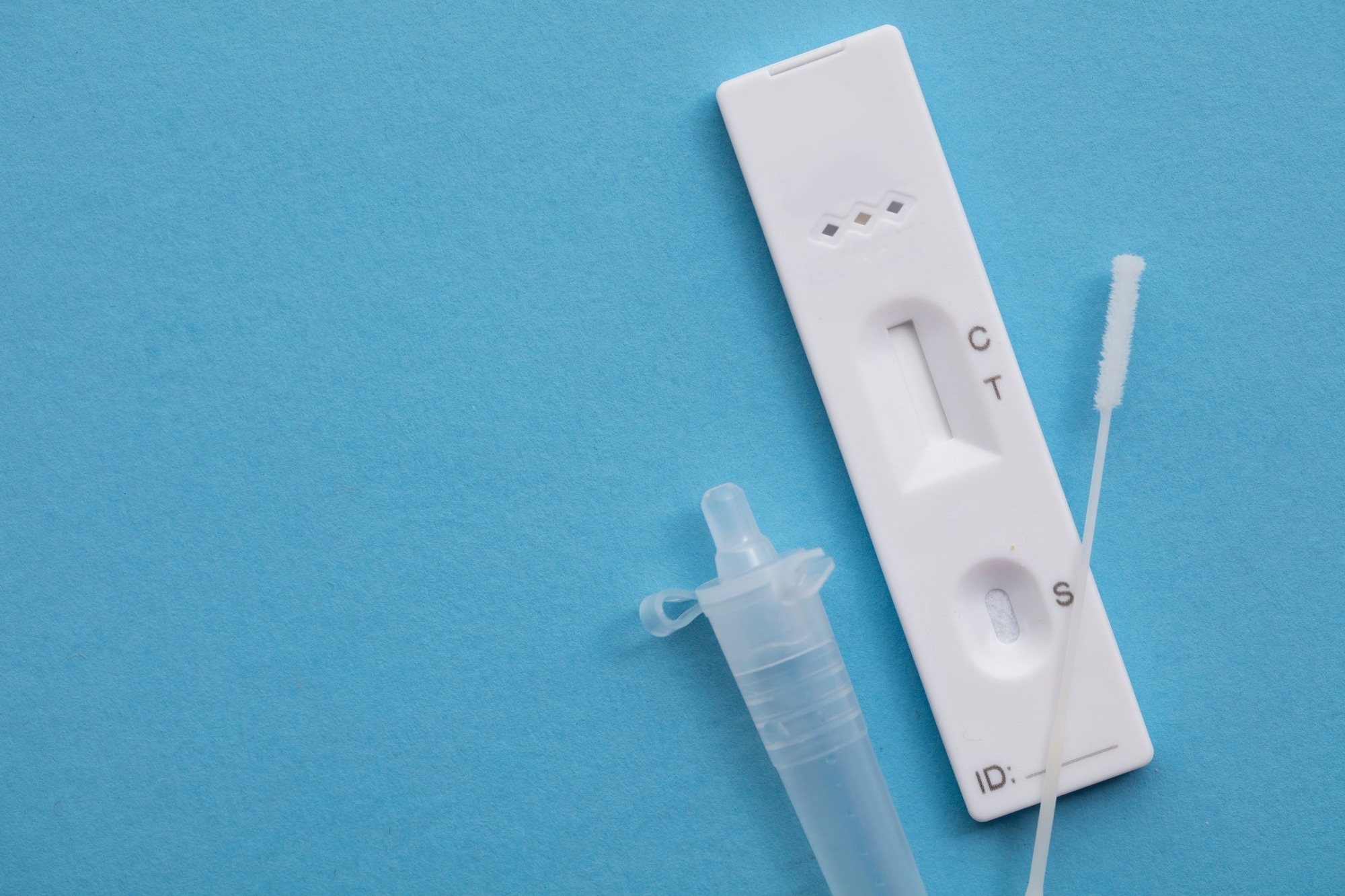In a recent review published in Nature Reviews Bioengineering, researchers assessed the changing landscape of lateral flow tests (LFTs), and the development of next-generation LFTs based on lessons learnt from the severe acute respiratory syndrome coronavirus 2 (SARS-CoV-2) pandemic.
 Study: Lateral flow test engineering and lessons learned from COVID-19. Image Credit: Ink Drop/Shutterstock
Study: Lateral flow test engineering and lessons learned from COVID-19. Image Credit: Ink Drop/Shutterstock
Background
LFT feasibility and acceptability for large-scale SARS-CoV-2 testing to improve population health have been observed during the coronavirus disease 2019 (COVID-19) pandemic. However, there are several limitations of LFTs, and roadblocks in developing next-generation LFTs. Identifying and working on the drawbacks and bottlenecks could accelerate LFT development and expand the diagnostic landscape of viral infections, such as COVID-19, and diseases of epidemic potential, especially those caused by antibiotic-resistant causative microbes.
About the review
In the present review, researchers described the evolution of LFT testing, the advantages and disadvantages of LFTs, and identified roadblocks in developing next-generation LFTs based on the lessons learnt from the COVID-19 pandemic.
The changing landscape of LFT diagnostics
LFTs were initially used as radiological immunoassays and latex agglutination tests and enabled paper-based dipstick tests for urinary glucose quantification. Eventually, the tests were used for pregnancy-related, serological assessments and diagnosis of human immunodeficiency virus (HIV) infections.
The COVID-19 period accelerated LFT development, during which cases of unknown-cause pneumonia were reported in Wuhan, genetic sequencing information was shared, and the World Health Organization (WHO) released interim guidelines on rapid antigen test usage.
Eventually, rapid antigen testing was performed in and beyond health service settings and beyond in conjunction with reverse-transcription-polymerase chain reaction (RT-PCR) analysis. However, only 0.40% of three billion SARS-CoV-2 tests performed until the middle of 2022 were conducted in low-resource settings, raising ethical concerns and affecting the collective pandemic response abilities.
Pre-COVID-19 pandemic LFTs used HIV antibodies and targeted antigens and antibodies. The tests were used for self-testing, clinical diagnosis, and screening at homes, clinics, and community-based settings, using gold nanoparticles and latex beads, with manually captured results. During COVID-19, LFTs used SARS-CoV-2 antigens, and their use was expanded to surveillance efforts. Ever since, LFTs have been used in additional settings such as mass gatherings, schools, borders, and workplaces, using quantum dots in addition to other materials. However, the method of result capture remained manual.
Lessons learnt from the SARS-CoV-2 pandemic
LFT sensitivity is reportedly lesser than RT-PCR analysis, in the range of 34.0% to 88.0% in detecting SARS-CoV-2 and 99.6% specificity. One lakh to 10 lakh SARS-CoV-2 genome copies/ml, can be detected by rapid antigen testing. In contrast, molecular techniques like RT-PCR analysis can identify 1.0 to 100.0 genome copies/ml, and SARS-CoV-2 presence in one to two days before LFT. However, LFTs were used successfully during COVID-19 due to the high SARS-CoV-2 transmissibility and short incubation periods to assess the infectiousness or transmission risks of SARS-CoV-2.
Molecular tests, although highly accurate, are unfavourable for mass-scale use and require centralized testing and greater duration to generate reports, whereas LFTs can provide rapid testing with high scalability but low sensitivity. In 2021, LFTs were rapidly adopted in England, surpassing PCR usage. Major roadblocks in LFT development and use include the lack of accessibility to well-characterized samples for testing and validation, low sensitivity, limited digital connectivity, scarce cost-efficacy evidence, delays in regulatory processes, and centralized manufacture of materials.
Multiplexing and using quantum- and nano-materials, nucleic-acid-based LFTs, machine learning, and CRISPR (clustered regularly interspaced short palindromic repeats) could improve LFT connectivity and accuracy. Observations from the pandemic have shown that LFT self-testing at a large scale could offer several benefits, such as early identification and prompt self-isolation, increased accessibility to diagnostic tests, increased frequency of testing, increased compliance with public health measures, curtailed viral transmission, and facilitated early recovery. However, access to self-tests is inequitable, with considerably lower adoption by low-income and middle-income nations.
Bioengineering efforts could improve specimen preparation, incorporating nucleic acid-based amplification and detection, enabling multiplexing, digital connection with mobile-Health (m-Health) databases and healthcare systems, and green manufacture of products to create simple next-generation LFTs with high accuracy, ease of use, cost-effectiveness, and rapid testing with improved digital connectivity, especially for identifying infections caused by antibiotic-resistant microbes.
Next-generation LFTs would target antigens, antibodies, and molecules, with AMR (antimicrobial resistance) panels and quick response (QR) codes, for use not only for self-testing, clinical diagnosis, screening and surveillance testing but also for environmental monitoring, using ultra-sensitive materials such as enzymatic nanoparticles, and nanodiamonds, with digitalized result capturing. The data could be linked to healthcare systems. Incorporating molecular detection would enhance diagnostic accuracy. Cas-based reactions could be combined with enzyme-amplified LFTs, and spin-enhanced quantum nanodiamond sensing and background subtraction could be used for ultra-sensitive detection. Machine learning would enable the automatic classification of LFT findings.
To conclude, based on the review findings, next-generation of next-generation LFTs could provide means for rapid and decentralized testing with high sensitivity and specificity at a mass scale. However, incorporating bioengineering approaches, machine learning, digitization, and multiplexing would require global collaborative efforts, regulatory harmonization, and an increase in funding to improve research infrastructure and increase the availability of suitable reagents. Efforts must be made to overcome LFT shortcomings, such as high false-negative rates, to provide next-generation diagnostic LFTs, with an equitable distribution, across the globe, to improve global preparedness against pathogens.